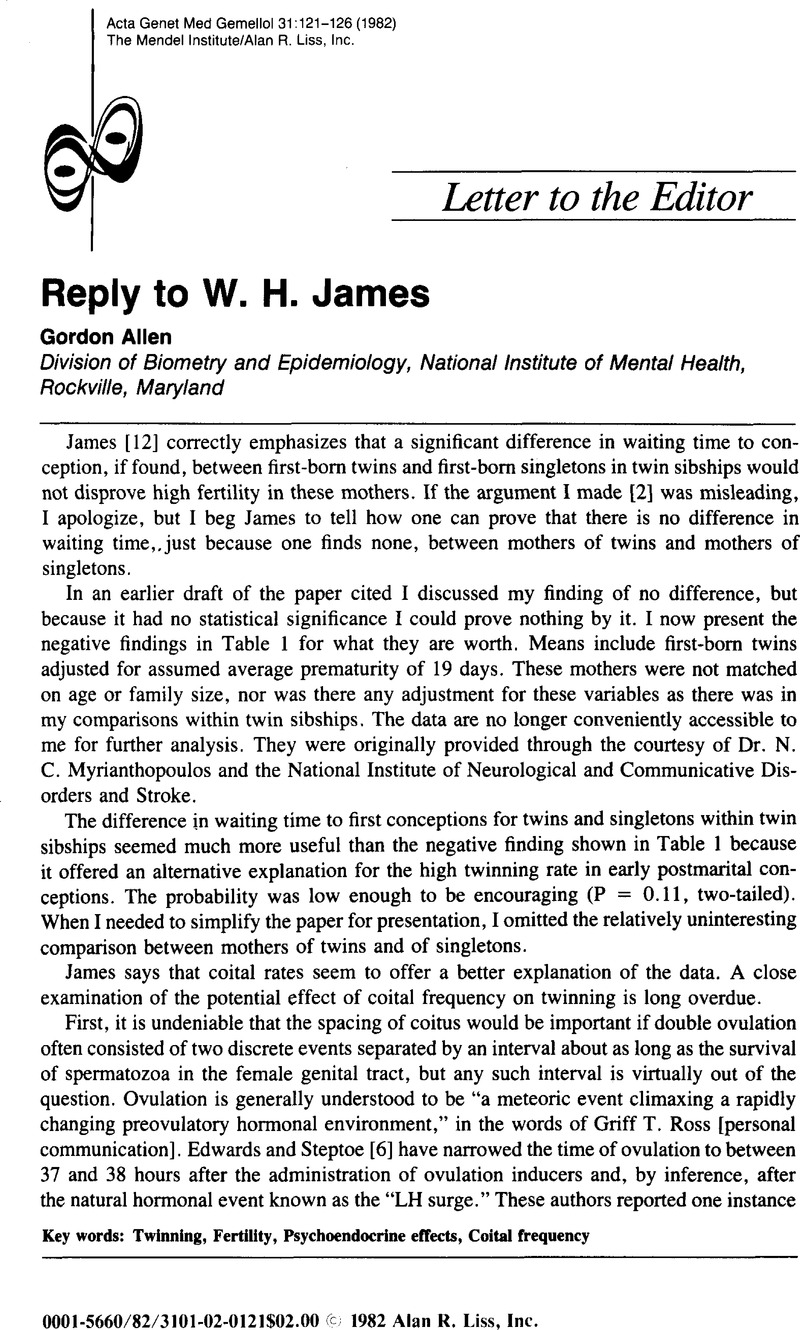Crossref Citations
This article has been cited by the following publications. This list is generated based on data provided by Crossref.
James, William H.
1990.
Coitus-Induced Ovulation and Its Implications for Estimates of Some Reproductive Parameters.
Acta geneticae medicae et gemellologiae: twin research,
Vol. 33,
Issue. 4,
p.
547.



